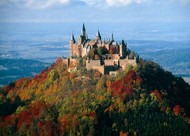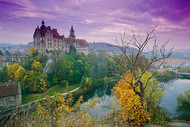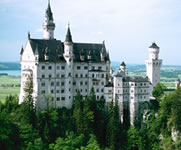
The House of Hohenzollern, which still exists today, is one of the oldest and most distinguished Swabian aristocratic dynasties. The name Zollern first appeared in Berthold von Reichenau's chronicle in 1061, but since the middle of the 14th century the name Hohenzollern has been used. By the early 12th century the Hohenzollerns were rulers of an area extending from the Neckar valley across the Swabian Alb to the river Danube. The former Hohenzollern territories, which produced south Germany's counts and princes, Prussian kings and German emperors, lay between Württemberg and Baden, today the federal state of Baden-Württemberg. The Hohenzollern Route runs for around 300 kilometres through former Hohenzollern country, through present-day Zollernalb and Sigmaringen, from the Upper Neckar across the Alb foothills, the Swabian Alb, the Danube valley and large parts of Upper Swabia almost as far as Lake Constance.

It passes through delightfully varied scenery and has a liberal sprinkling of cultural and historical sights, museums, quaint towns and picturesque villages. The tour begins in the romantic town of Glatt, which saw a succession of rulers before being run by Muri Abbey in Switzerland and passing into Hohenzollern-Sigmaringen hands in 1806. The stunning moated castle, which acquired its four-wing extension in the mid-16th century, is the most important Renaissance building along the Upper Neckar. Haigerloch, a former Hohenzollern town in the rocky valley of the Eyach, also has an impressive Renaissance palace. One unusual tip for your itinerary is the Atomic Cellar Museum in the former beer cellar beneath the palace church. It is the site of the world's first atomic reactor.
 Skip to content
Skip to navigation
Skip to subnavigation
Skip to search
Skip to content
Skip to navigation
Skip to subnavigation
Skip to search







